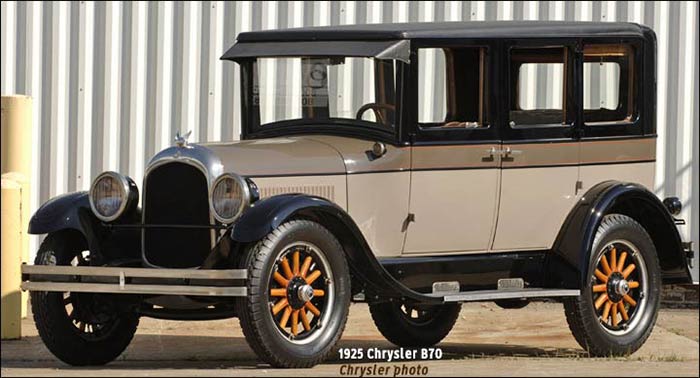
In the 1925 Chrysler Corporation Annual Report—its first—Walter Chrysler wrote, “The past year has been one of notable progress and achievement for your business.” He pointed to:
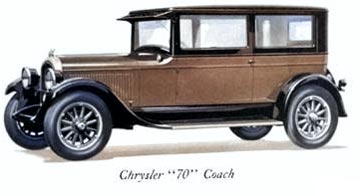
During 1925, Walter Chrysler had created the Chrysler Corporation and used it to take over Maxwell Motor Corporation, Chalmers, and Zeder-Skelton-Breer Engineering Company. His main reasons was to avoid resistance to a name change, and, mainly, to change the way shares were treated—eliminating Maxwell’s Class A shares increased the value of the common shares, while new Preferred Shares had preference when assigning dividends.
The takeover, completed on June 6, 1925, caused some confusion as Chrysler dated itself to 1903, 1923, 1924, or 1925 later on. DaimlerChrysler and then Fiat Chrysler considered 1925 to be its birthdate, though Walter himself wrote as though Chrysler and Maxwell were interchangeable—and the first Chrysler started production in 1923 and was publicly unveiled and sold at dealers in January 1924. Chrysler, as a marque, started with 1924 model-year and 1923 calendar-year production.
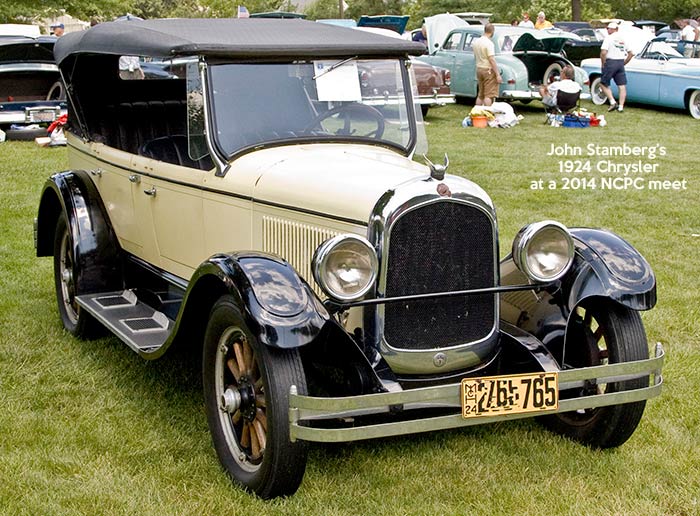
The board of directors included Hugh Chalmers, brought in with the purchase of his namesake company. The original corporate officers included just one of the “Three Musketeers:”
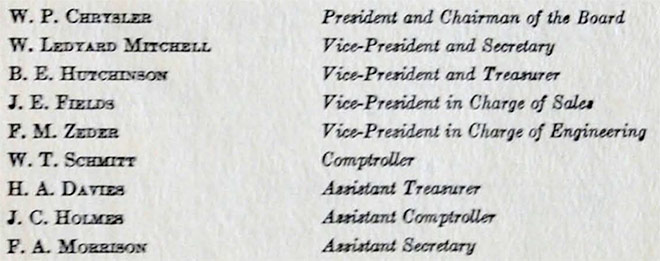
Chrysler reported having 10,567 employees in the year, with a $20.6 million payroll—not including retail sales in either case. U.S. sales were 31,815 open cars and 102,516 closed cars; in Canada, 957 open cars and 2,283 closed cars (the totals were 134,331 and 3,240).*
For 1926, Chrysler sold two lines of cars: the much-upgraded Maxwell, marketed as the Good Maxwell, and the Chrysler Model B. The Chrysler Model B was split from just the B-70 in 1925 to add the 1926 model-year 58 as well as the 70. Both cars were named after their top speeds and featured adjustable front seats, rubber engine mounts, and rubber spring shackles, making them much smoother than the 1924s.
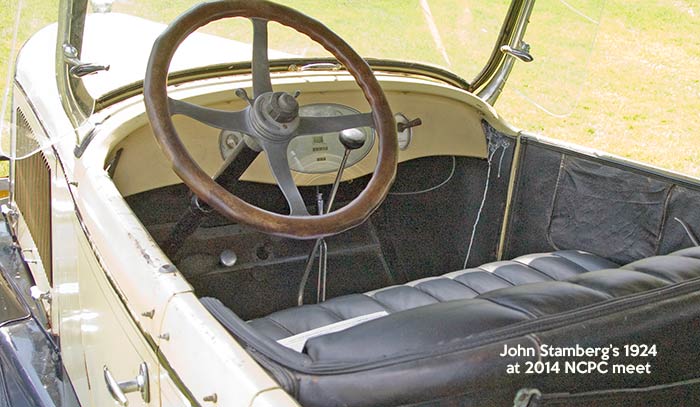
The bodies of these cars were not luxurious, generally; they were upscale mainly in features and engineering. A Packard, as one example, had a much finer body in interior design; there was no question about the difference between a true luxury car and a Chrysler when looking at the dashboard. However, few luxury cars, if any, could match Chrysler in engineering—with its six-cylinder high-compression engine, seven-bearing crankshaft, air filter, replaceable oil filter, and four-wheel hydraulic brakes. None of these features were available in other medium-priced cars.
Another new Chrysler car for 1926 was the Imperial 80, again named for its top speed; this one had a much nicer cabin, in terms of appearance, along with high torque and hill-climbing ability. When Floyd Clymer drove an Imperial (a factory-stock car, not modified) on an endurance run over 300 paved and 200 unpaved miles, he managed an average speed of 52 mph, setting a record.
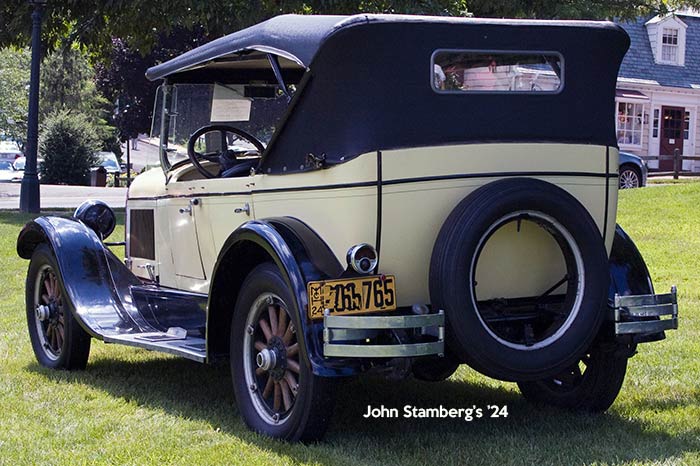
The Maxwells were not related to the Chryslers; they pre-existed the coming of the Chrysler, and were in their final model year under that name. The 1926 “former Maxwells” cars would be sold as Chrysler Fours. Their 185 cubic inch engines managed just 21 gross horsepower, even under Dodge Brothers’ 35 hp. Modern conveniences were speedometers, odometers, inner-tube tires, and nickel-plated exterior trim (e.g. the radiator shell); headlights were nine inches in diameter. The brakes were mechanical, as on all but a very few cars of the day.
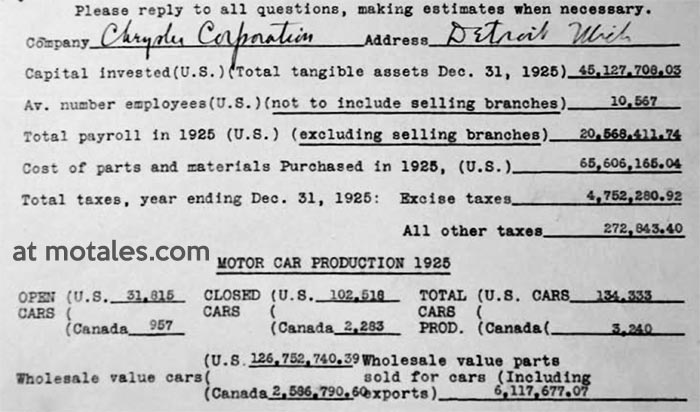
1925 production of the Maxwell was 27,153 at Jefferson Avenue (Detroit) and 3,593 in Canada (Windsor); in the same year, they made 105,190 Chryslers in Detroit and 1,613 in Windsor. In 1924, Maxwell production (48,124 in the US) had clearly outpaced Chrysler (31,020), but as word got out, the Chrysler became far, far more popular.*

The Chrysler was increasingly popular, and the company expected sales of the Maxwells to rise when they became Chrysler Fours; research and development was booming under Carl Breer; and a new export business was already doing well. No surprise, then, that Walter signed off by saying, “There is every indication that business this spring will surpass all previous records of this Corporation” (though the Corporation’s only year of operation was 1925).
See our coverage of the 1924 Chrysler
* Sales and production figures generally don’t match. The Standard Catalog of Chrysler pegs 1925 Chrysler-car production at around 76,600 with registrations, a close proxy for sales, of 68,793. Chrysler production and sales figures for many years were confusing, and somewhat suspect—not that there was deliberate obfuscation, but there were likely many estimations along the way.Copyright © 2021-2025 Zatz LLC • Chrysler / Mopar car stories and history.
YouTube • Editorial Guidelines • Videos